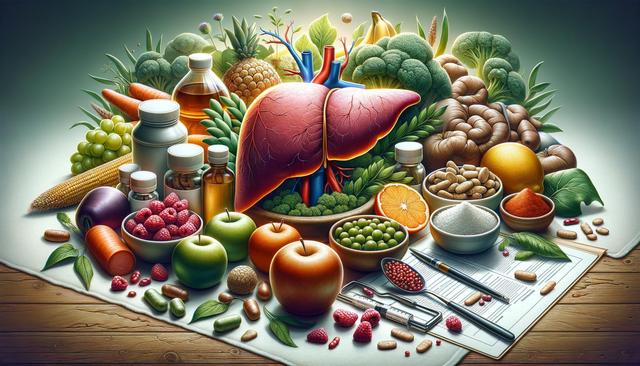Understanding Pain in Advanced Liver Cirrhosis
Advanced liver cirrhosis can bring a range of physical symptoms, with pain being a common concern. The discomfort typically arises from complications such as ascites (fluid buildup in the abdomen), muscle cramps, or liver capsule stretch. In some cases, referred pain from nearby organs or nerve compression can also contribute. Understanding the source of pain is crucial, as it influences which relief methods are most appropriate. Chronic liver disease also alters how the body processes medications, so pain management must be approached with caution. Over-the-counter pain relievers, especially nonsteroidal anti-inflammatory drugs (NSAIDs), are often avoided due to their potential to worsen liver function or trigger gastrointestinal bleeding.
In clinical settings, medications like acetaminophen may be used in controlled doses, and in some cases, low-dose opioids may be considered under strict supervision. However, pain relief strategies often extend beyond pharmaceuticals. Non-drug approaches such as physical therapy, acupuncture, and mindfulness-based stress reduction have shown promise in improving comfort levels without burdening liver function. Effective pain management in cirrhosis is always individualized, requiring input from hepatologists, pain specialists, and nutritionists.
Dietary Approaches to Reduce Discomfort
Nutrition plays a fundamental role in managing both the progression of liver cirrhosis and the symptoms associated with it. Certain foods can help reduce inflammation, support liver function, and ease digestive discomfort, all of which may contribute to improved pain management indirectly. An effective dietary plan for someone with liver cirrhosis aims to maintain muscle mass, manage fluid retention, and control toxins in the body.
Some beneficial dietary strategies include:
- Low sodium intake to reduce fluid retention and ascites
- High-protein, plant-based foods to preserve muscle strength
- Frequent small meals to support metabolism
- Hydration with water and herbal teas, avoiding sugary or carbonated drinks
Foods such as leafy greens, berries, garlic, and turmeric are often included due to their anti-inflammatory compounds and antioxidant properties. Moreover, fermented foods like yogurt (when tolerated) can support gut health, which is closely linked with liver function. Patients should avoid raw seafood, alcohol, and high-fat, processed foods, as these can exacerbate liver damage or increase toxin buildup.
Managing Ascites and Related Discomfort
Ascites, or the accumulation of fluid in the abdominal cavity, is a common and painful complication of advanced liver cirrhosis. This condition leads to abdominal pressure, discomfort, and can interfere with breathing or digestion. While clinical strategies such as paracentesis (draining fluid) are often used, dietary management plays a supportive role in reducing the severity and recurrence of ascites.
The main dietary focus here is sodium restriction. Sodium causes the body to retain water, worsening fluid buildup. A typical recommendation is to limit sodium intake to less than 2,000 mg per day. Some practical tips include:
- Avoiding processed and canned foods
- Using herbs and spices instead of salt for flavor
- Reading food labels carefully for sodium content
In addition to sodium reduction, adequate protein intake is critical, as protein malnutrition is common in cirrhosis and can worsen outcomes. However, some patients may require special guidance if they have hepatic encephalopathy, a condition where excess protein may exacerbate confusion. Balancing these needs requires personalized advice from a dietitian familiar with liver disease.
The Role of Supplements and Natural Remedies
In some cases, natural supplements and herbal remedies are considered for liver support and pain relief. While these should never replace prescribed treatments, some compounds show potential benefits. Milk thistle, for example, is often discussed for its liver-protective properties. Curcumin, the active component in turmeric, has anti-inflammatory effects that may help with systemic discomfort. Omega-3 fatty acids from fish oil are also recognized for their ability to reduce inflammation and support cardiovascular health, which can be beneficial in cirrhosis.
However, not all supplements are safe for individuals with liver disease. Some herbs can be hepatotoxic, meaning they may harm the liver. Therefore, any supplements should be taken only under medical supervision. Additionally, some individuals find relief through integrative therapies like acupuncture, guided imagery, or yoga, particularly for managing muscle cramps, fatigue, and general pain perception. These therapies can complement medical treatments and provide emotional as well as physical relief.
Monitoring liver function through regular testing is essential when introducing any new supplement or remedy. The liver’s ability to process compounds is reduced in cirrhosis, which increases the risk of adverse effects even from natural products. Always discuss potential therapies with a healthcare provider familiar with your liver condition.
When to Seek Medical Attention and Long-Term Outlook
Pain in liver cirrhosis can fluctuate and sometimes signal worsening complications. It’s important to recognize when discomfort is more than routine and requires medical attention. Signs that should prompt immediate evaluation include:
- Sudden increase in abdominal size or pain
- Severe muscle cramping or weakness
- Persistent vomiting or gastrointestinal bleeding
- Confusion or altered mental state
These symptoms may indicate progression to more serious conditions like spontaneous bacterial peritonitis, hepatic encephalopathy, or internal bleeding. Regular follow-up with a hepatologist is essential for monitoring disease status and making timely adjustments to the pain management plan.
For long-term care, a multidisciplinary approach that includes medical treatment, nutritional support, mental health care, and lifestyle adjustments offers the most comprehensive relief. Support groups and counseling can also be beneficial for coping with the emotional toll of chronic illness. While advanced liver cirrhosis presents significant challenges, proactive care strategies can improve quality of life and provide meaningful symptom relief.
Conclusion
Managing pain in advanced liver cirrhosis requires a holistic and personalized approach. Through careful dietary choices, thoughtful use of medications and supplements, and non-invasive therapies, individuals can find relief and maintain as much comfort as possible. Always consult healthcare professionals before making changes to your treatment or diet, as liver conditions vary significantly in severity and response. With the right support, it’s possible to navigate the complexities of cirrhosis while preserving dignity and quality of life.


